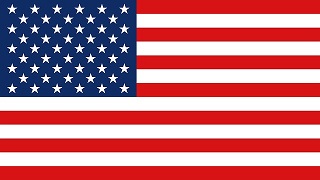
As your end of service or retirement date looms you will be begin to receive a lot of advice about how to handle your post military job search. Quite often you will receive a recommendation to read WCIYP by Richard N. Bolles. WCIYP is one of the seminal books to help job seekers learn about themselves and what job/career would be the best fit for them.
Many years ago, after I left active duty and completed college, I read the book and found the advice helpful. However, to be honest, I had forgotten a majority of the book’s content and advice. Recently, I began exploring the market for a job change and I have also been mentoring veterans on their job search. As a result, I decided to re-read the book to see if it still held value and was worth recommended to fellow veterans. Luckily for me, my local library had a recent copy.
Introduction
The book was first published in 1970 and has been updated annually since 1975. The 2019 version of the book starts by explaining the current job market and providing statistics for the average job search. According to the book, ~31% of job searchers find employment in 1-3 months. For this population of job searchers, they have done their homework, kept or developed sought after skills and have networked extensively to find their job. Of the remaining two thirds of job seekers, ~19% percent get a job in 3 to 6 months, ~20% take between ~6-12 months to get a job and the remaining 30% take a year or more.
WCIYP Approach to the Job Search
Next, the book compares and contrasts the traditional job search were everyone is a “job beggar” to the WCIYP approach where any company “would be luck to get you”. The book suggests in order to find your dream job, the job you would most love to do, and where your talents can be fully realized you must first do homework on yourself. It goes on to say in order to find out the best companies that will be the best fit for you, you must do “informational interviews.” This is where you go meet with employees and hiring managers at companies and ask them about the job or career you are interested in. The book also gives you strategies on how to locate a “bridge person” to help you set up informational interviews.
A “bridge person” is someone who knows you and who works at the company you are interested in or knows someone who does. They in essence form a “bridge” between you and the company and job you want. They can help set up information interviews or introduce you to people who can.
Best and worst Ways to find a Job
After outlining the WCIYP job search approach, the book ranks the best and worst ways to find a job. As an example, the book says responding to an employer’s job posting on the internet is statistically one of the worst ways to find a job. In contrast, asking for job leads from friends, family or people on your social networks like Linked in is one of the best ways to search for a job.
Discovering Yourself
At the heart of the book is a method to learn about yourself and what your dream job would be. The book devotes two chapters on an approach to do a self-inventory. The method the book uses is to have you create a flower or diamond diagram with seven focus areas. The first being your purpose in life, then defining the work atmosphere you would most thrive in, next identifying your favorite skills and talents that you would excel at doing. After this, you identify the geographical location you would most like to live, followed by defining your most important knowledges and interests you have and then the type of people you would most want to work with. Then your self-inventory completes with you defining the salary you desire. The book guides you through multiple exercises to complete your diagram. When I re-read the book this section took the longest. However, I can honestly say having completed my diagram did help me and revealed a few things about myself that were not obvious to me before reading the book.
Informational Interviews
After you complete your diagram the book encourages you to explore careers or jobs that your diagram points you to. It recommends doing this by seeking out and talking to people who are already doing the job you want. The book again recommends conducting informational interviews. The book states the average job seeker screens a company after they are hired and recommends you do your homework before you are hired. To do this the book recommends you find, you guessed it, a “Bridge” person.
Next the book talks about social media and recommends you Google your name and correct or seek to remove any misinformation that exists about you online. Several companies allow you to opt out of their directories. This section of the book is a little dated as it references Plaxo which is now defunct, but in general the advice is sound.
Interviewing Tips
The following section of the book provides sixteen tips for interviewing. While many of the tips are common sense (mix speaking and listening 50/50), several are relevant and things you will want to abide by (listen to questions to understand what fear about the future caused them to ask you the question). Also, by reviewing the list it can help you build confidence that you will perform well in an interview.
Salary Negotiation
After interviewing tips, the book then provides guidelines on negotiating a salary. For those who have never negotiated a salary the book offers several great suggestions. Items like when asked what your salary desires are, you should always recommend a range vs. a single number. The book also gives tips on how to find out what the employers salary range is and bracket your answer appropriately.
In Conclusion
The book then goes on to provide suggestions on how to deal with handicaps, strategies to change your career and culminates with a chapter on starting your own business if you elect to create your own job. Overall, after all these years, I found the book was still relevant and helpful. For those who are not sure of what direction to pursue after the military, the self-inventory section of the book will probably provide the most value. If you are a transitioning military member WCIYP is still a great book to add to your reading list to help you prepare and be part of the 31% who find their dream job in 1-3 months after leaving the service.
Here is a non-affiliate link to What Color Is your Parachute 2020 version. The 2020 version table of contents appears almost identical to the 2019 version this article was based on. As a result, I believe the main points in this summary are still valid.
Also, according to the latest statistics, each year, nearly 200,000 servicemen and women will separate from active duty in the United States military. If you believe this article would benefit military members or veterans in your network, please share it. – Thanks Ben
